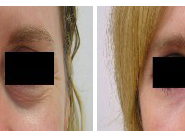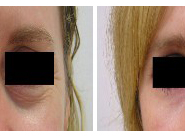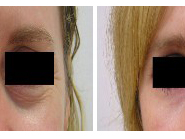 Infographics for Backlinks – Visual Goldmines for Authority Sites!
Infographics for Backlinks – Visual Goldmines for Authority Sites!
The Best Laser Hair Removal Technology: How It Works and Why It’s Effective
Written by Enfield » Updated on: June 17th, 2025

Laser hair removal has revolutionized the way people approach hair reduction, offering a long-term solution that is both effective and convenient. Unlike traditional methods such as shaving, waxing, and plucking, laser hair removal targets hair follicles directly, leading to permanent hair reduction. This article explores the various Best laser hair removal in OMAN technologies available, how they work, and why they are effective.
Understanding Laser Hair Removal
Laser hair removal involves the use of concentrated light energy to target and destroy hair follicles. The procedure is based on the principle of selective photothermolysis, which allows the laser to differentiate between the pigment in the hair and the surrounding skin. When the laser is applied, the light is absorbed by the melanin (the pigment) in the hair. This absorption generates heat, which then damages the hair follicle, inhibiting future hair growth.
Types of Laser Technologies
There are several types of laser technologies used in hair removal, each with its own advantages and ideal use cases. The most common include:
Alexandrite Laser:
Wavelength: 755 nm
Ideal For: Light to olive skin tones
How It Works: The Alexandrite laser emits a wavelength that is well-absorbed by melanin, making it effective for hair removal in individuals with lighter skin. It has a large spot size, which allows for quicker treatment of larger areas.
Diode Laser:
Wavelength: 800-810 nm
Ideal For: All skin types, particularly effective for darker skin
How It Works: The diode laser has a longer wavelength, which penetrates deeper into the skin and is less absorbed by the melanin in the skin. This makes it a safer option for darker skin types while still effectively targeting hair follicles.
Nd
Laser:
Wavelength: 1064 nm
Ideal For: Darker skin tones
How It Works: The Nd
laser has the longest wavelength of the common laser types, allowing it to reach deeper layers of skin. It is particularly effective for individuals with darker skin tones, as it minimizes the risk of pigmentation changes.
Ruby Laser:
Wavelength: 694 nm
Ideal For: Light skin types
How It Works: The Ruby laser is one of the earliest lasers used for hair removal. It is effective for fine, light hair and lighter skin tones but has largely been supplanted by more advanced technologies.
Intense Pulsed Light (IPL):
Wavelength: Broad spectrum (500-1200 nm)
Ideal For: Various skin types
How It Works: While not a laser in the strictest sense, IPL devices use broad-spectrum light to target hair follicles. It’s less precise than lasers but can be effective for hair removal on a wide range of skin tones.
The Laser Hair Removal Process
The laser hair removal process typically involves several steps:
Consultation: Before treatment, a consultation with a qualified practitioner is essential. During this visit, the practitioner will assess your skin type, hair color, and medical history to determine the best laser type and treatment plan.
Preparation: On the day of treatment, you may be advised to avoid sun exposure, tanning creams, and certain medications that can increase sensitivity. A topical anesthetic may also be applied to minimize discomfort.
Treatment: The practitioner will use a handheld device that emits laser light onto the targeted area. You will wear protective eyewear to shield your eyes from the bright light. The laser will be applied in a series of pulses, with each pulse lasting only a fraction of a second.
Aftercare: After treatment, you may experience mild redness or swelling in the treated area. Ice packs or cooling gels can be applied to soothe the skin. You will receive specific aftercare instructions to follow, including avoiding sun exposure and using gentle skincare products.
Why Laser Hair Removal is Effective
Precision: One of the main advantages of laser hair removal is its precision. The laser specifically targets hair follicles while leaving surrounding skin unaffected. This precision reduces the risk of skin damage compared to traditional hair removal methods.
Speed: Laser hair removal is efficient. Each pulse of the laser takes only a fraction of a second and can treat multiple hairs simultaneously. Small areas, such as the upper lip, can be treated in less than a minute, while larger areas, such as the legs or back, may take up to an hour.
Long-Lasting Results: Unlike other hair removal methods, which only provide temporary results, laser hair removal leads to long-term hair reduction. After a series of treatments, many patients experience a significant reduction in hair growth, with some achieving permanent hair removal.
Reduced Ingrown Hairs: Many people who frequently shave or wax experience ingrown hairs, which can be painful and unsightly. Laser hair removal significantly reduces the occurrence of ingrown hairs by targeting the follicle directly.
Customizable Treatments: Different laser technologies allow practitioners to customize treatments based on individual needs. Factors such as hair color, skin type, and area being treated all play a role in determining the best approach.
What to Expect After Treatment
After undergoing laser hair removal, it’s important to have realistic expectations. The process typically requires multiple sessions to achieve optimal results, as hair grows in different cycles. Most people need 4 to 6 sessions, spaced several weeks apart, to ensure that all hair follicles in the active growth phase are treated.
Post-treatment, you may experience some redness and swelling, similar to a mild sunburn. These effects usually subside within a few hours to a few days. Following aftercare instructions, such as avoiding sun exposure and moisturizing the skin, can help promote healing and enhance results.
Is Laser Hair Removal Right for You?
While laser hair removal is effective for many individuals, it may not be suitable for everyone. Factors to consider include:
Skin Tone and Hair Color: The effectiveness of laser hair removal is largely determined by the contrast between your skin and hair color. The best results are seen in individuals with light skin and dark hair. However, advancements in laser technology, such as the diode and Nd
lasers, have made it possible for people with darker skin tones to benefit as well.
Medical Conditions: Certain medical conditions, such as skin disorders or hormonal imbalances, may affect treatment outcomes. It’s essential to discuss your medical history with your practitioner during the consultation.
Commitment to Treatment: Achieving optimal results requires a commitment to multiple treatment sessions. If you are not willing to adhere to the treatment schedule, you may not achieve the desired results.
Conclusion
Laser hair removal technology represents a significant advancement in hair reduction methods, offering a precise, efficient, and long-lasting solution for those seeking to eliminate unwanted hair. With various laser types available, each catering to different skin tones and hair types, it’s crucial to consult with a qualified practitioner to determine the best option for your needs. As you embark on your laser hair removal journey, understanding the technology and process will empower you to make informed decisions, leading to a smoother, hair-free future.
Note: IndiBlogHub features both user-submitted and editorial content. We do not verify third-party contributions. Read our Disclaimer and Privacy Policyfor details.
Copyright © 2019-2025 IndiBlogHub.com. All rights reserved. Hosted on DigitalOcean for fast, reliable performance.

















